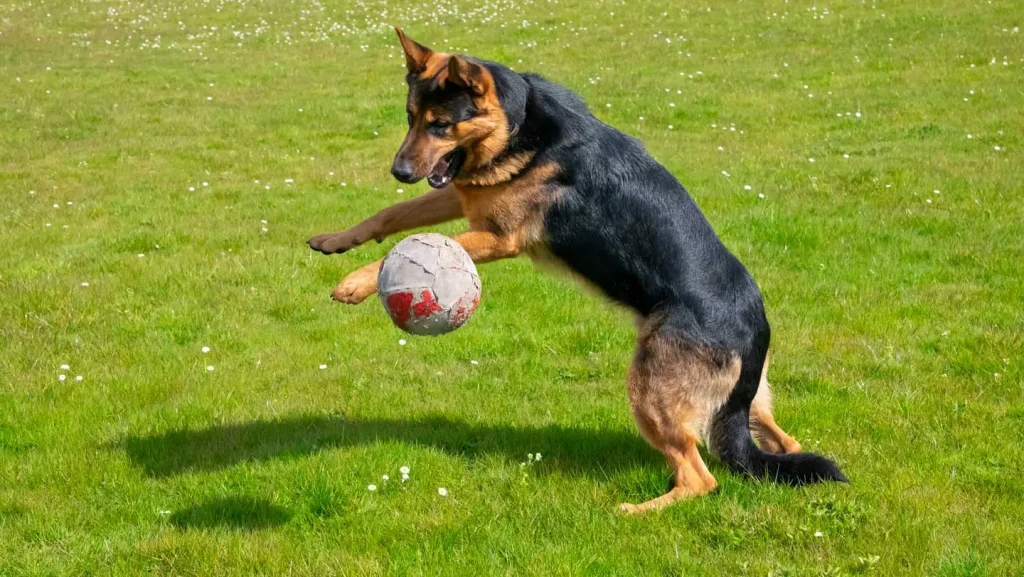When Your Dog’s Play Turns Into an Addiction: New Research Reveals Surprising Findings
We all know the scene: a dog with pleading eyes, tail wagging excitedly, and a well-loved toy dropped at your feet—a clear request for “just one more throw.” Many of us have joked that our dogs seem addicted to play, but recent scientific research suggests this comparison might be more accurate than we realized. A groundbreaking study by behavioral biologist Stefanie Riemer and her colleagues has uncovered evidence that some dogs display behaviors toward toys that share striking similarities with human addictions.
The research team assembled a diverse group of 105 pet dogs, all known to enjoy playtime. Each owner selected three potential toys—a ball, a plush toy, and a tug toy—that they believed would appeal to their pet. The dogs themselves made the final selection through their level of interest, and this preferred toy became the focus of a series of revealing experiments. The tests were specifically designed to measure how dogs responded when their favorite toy was unavailable or when they faced a choice between the toy and another attractive option like food.
In one particularly telling experiment, researchers placed the dog’s favorite toy on a shelf out of reach, then carefully observed the dog’s reaction. Many dogs displayed clear signs of distress—whining, staring longingly at the unreachable toy, and even jumping in attempts to retrieve it. Another test offered dogs a choice between working to access their toy (locked in a box) and freely available food in a puzzle. Remarkably, some dogs completely ignored the food, instead focusing all their energy on trying to access the locked toy. Researchers also measured how long it took dogs to calm down after play sessions ended, finding that some pups struggled significantly with this transition.
Using a carefully developed scoring system based on these behaviors, the team identified 33 dogs (nearly a third of participants) that exhibited what they classify as “addictive-like behavior” toward toys. These findings were published in the journal Scientific Reports on October 9. Interestingly, Riemer believes it’s not actually the physical toy that drives this intense focus, but rather the play activity itself and the positive feelings it generates. “I think the reason why the dogs want the toy so much is really because it’s associated with this exciting play,” she explains. “So, it’s really the playing, but not the toy.” This parallels certain aspects of human behavioral addictions, where people may become attached to activities that produce pleasurable feelings.
The researchers noted that this play-focused intensity was more commonly observed in certain dog types, particularly terriers and shepherds. This pattern makes sense from a breeding perspective, as Riemer points out: “These traits are desirable in working dogs, easy to motivate, high focus, high perseverance.” The very qualities that make these dogs excellent working companions may also predispose them to developing these intense play attachments. However, before dog owners become concerned about their pet’s enthusiasm for playtime, Riemer emphasizes that true “addictive-like” behavior toward toys is likely quite rare in the general dog population. An unpublished survey of approximately 1,600 dogs suggested that only about 3 percent would qualify as having this type of relationship with toys.
While these findings open up fascinating questions about canine behavior and the parallels between animal and human psychology, Riemer cautions against making direct equivalences between dog behavior and human addiction. The science of behavioral addictions in people is still evolving, and our understanding of similar patterns in dogs is even more preliminary. Nevertheless, the study reinforces the importance of play in dogs’ lives. “Play is really valuable also for the dog-human relationship,” Riemer notes. “It’s something that you should foster.” Even Riemer’s own dog, a Russian Toy named Yari, has his preferred plaything—a simple tennis ball. So next time your dog brings you their favorite toy for the hundredth time, remember that this shared play isn’t just fun—it’s strengthening your bond, even if your arm is getting tired from all that throwing.















